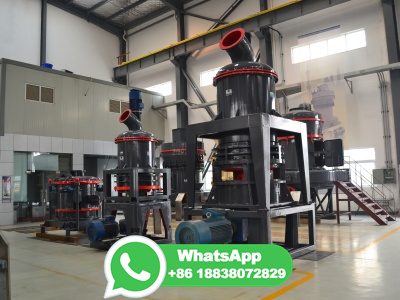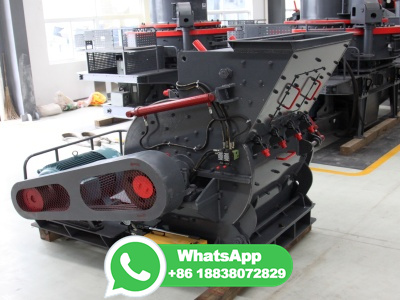

Power generation is an important approach to utilization of lignite resources. However, the high moisture content always results in low efficiencies of lignitedirectfired power plants. Predrying is an effective method to improve the energyefficiency because it removes the redundant moisture and increases the heating value of the lignite entering the furnace. [2,3] Many works have been ...


Replacing lignite power plants in Germany, Poland, and the Czech Republic with renewable sources by 2032 does not increase the costs of power generation in the region. This is the result of a new study by Agora Energiewende and Forum Energii. For all three countries of Europe's lignite triangle, costs for power generation will not increase if they close coalfired power plants faster than ...


dorf, RWE Power operates lignite power plants on five sites with a total output of approximately 11,000 MW. Their operation requires around 85 million tons of lignite per year, which is used to generate electricity in the power plants. Besides the 1,000 MW „BoA1" unit, the Niederaussem power plant comprises two 600 MW units and four 300 MW units generating electricity from Rhenish ...


On 30 January 2020, immediately after the publiion of the coal exit law by the German government, Uniper presented an ambitious roadmap for the phaseout of its own coalfired power generation in Germany. The coal exit law provides for the Schkopau lignitefired power plant to run until the end of 2034. With the sale of its stake in the Schkopau power plant, Uniper in Europe will also ...


Similarly, the German Democratic Republic became extensively dependent on lignitebased power generation to grow more energy selfsufficient. Other uses include the conversion of brown coal into coke conducted by East German scientists for metallurgical purposes. Interestingly, much of the Deutsche Reichsbahn railway network relied heavily on lignitederived energy either through electric ...


· Coal generation – hard coal and lignite – fell to 365 terawatthours in 2020, a fall of 48% since 2015. That is a remarkable achievement and is equivalent to around 320 million tonnes less CO2 per year, which is about 7% of Europe's GHG emissions in 2020. Lignite generation fell 18% in 2020, its biggest fall since at least 2000; but once again this was less of a fall than hard coal ...


Example: Lignitefired power plants ... up process) Further potential by increased startup gradients of GT and ST Improved startup concept Improvement potentials gained fromstartup concept, component capabilities and automation. Unrestricted© Siemens AG 2017 Page 11 International Energy Agency AdvancedPower Plant Flexibility Campaign – Paris, September 18, 2017 Andreas Feldmüller 1 2 3 ...


Lignite and bituminous coal are largely used in Indian TPPs due to their Lignite is considered suitable for power generation due to its low ash content. Coal India Ltd., a public sector company, provides coal for TPPs from national mines on a contractual basis. Grades of coal used in India based on calorific value


Cycle Process Evaluation Report Appendix F . 4 ABSTRACT Objective: The Allam Cycle is a novel power generation cycle that uses supercritical CO2 as the working fluid in the turbine, eliminating the traditional energy penalty associated with vaporization of water. The team leading this project has been working through early stages of development of the Allam Cycle for 3 years, including through ...


fuel and larger, more capitalintensive facilities are necessary to generate a unit of power with lignite than is the case with bituminous coal. The disadvantages arise because: (1) lignite's lower heating value means more fuel must be handled to produce a given amount of power; (2) the energy and maintenance costs of coal handling equipment are higher; (3) the high inherent moisture content ...


· The fluegas emission associated with the generation of power generation is directly proportional to the amount of fuel input and to the efficiency of the power plant. The increase in efficiency from WTA technology directly helps in lowering of this emission. In conventional drying of the lignite coals, the coal is dried using hot flue gases, which are drawn from the steam generating boiler ...


based process 2) Polymeric CO2selective membranebased capture 3) ... Due to its local availability and its low cost, lignite is especially used in the power generation sector in Germany, United States, Russia, Central and Eastern Europe. While lignite still represents around 10% of the total world coal production, the global demand for lignite has been decreasing for the last decades [1]. In ...


· But Kawasaki Heavy Industries (KHI) has developed a production process that cleans up lignite so much that the industrial giant plans to build a 4,000mile, greenhydrogen supply chain to gasify lignite coal in Australia (while sequestering the CO 2), and then shipping liquified hydrogen back to Japan. Once regasified, it could fuel everything from cars to power plants, all emissionfree ...


Krabi Lignite Power Plant Unit Capacity (MW) Commercial Operation Note 1 20 1964 Decommissioned in 1995 2 20 1964 Decommissioned in 1986 3 20 1964 Decommissioned in 1995 Source: Electricity Generation Authority of Thailand. b. Mae Moh Lignitefired power plant The Mae Moh lignitefired power plant was part of a national energy development strategy of reducing the country [s high .


The coal desulphurization process is critical to power generation, power generation and technology, and technology field of appliion. The coal desulphurization process ensures the maximum recovery of the highest content of sulphur and hydrogen sulphide (H 2S) in desulphurized gases at minimal energy costs. The process also enhances the maximum decomposition of tar and sulphur recovery ([50 ...


The hightemperature process for which the two units have been developed allow supercritical steam conditions and higher efficiencies that will set new standards for lignitebased power generation. The power capacity of 933 MW per unit and net efficiency for the plant of percent make it one of the world's most efficient and largest power plants to be fired with brown coal. The ...


Mined: Lignite Energy in America: a podcast from the Lignite Energy Council. Join hosts Kate and Geoff as they explore industryrelated topics. Podcast; Uses of Lignite. Home; What Is Lignite? Uses of Lignite; Percentages of How Lignite Energy Is Used. 79%. Electricity Generation. 13%. Synthetic Natural Gas Generation. 7%. Fertilizer Products Production. 1%. Home Heating, Fertilizer and Oil ...


generation, in addition to already planned and paid for power plant closures. By selecting older generation, these closures could be limited to units with an average age of 46 years, leaving remaining generation with an average age of 18 years. We assume that alternative uses of lignite, such as briquette manufacture, would be unaffected.


Using lignite as a fuel for power generation has several disadvantages. The low heating values and high moisture content of lignite, for example, imply larger boiler size and low energy efficiency when used directly in power plants. The main combustible component of lignite or coal consists largely of carbon and therefore


2012, net electricity generation in Serbia was approximately 34,509 GWh [1]. % of electricity production in 2012 relied on lignite, most undesirable coal (low calorific value, high moisture and sulphur content). Hydroelectric power plants contributed % of .


optimization: process efficiencies, net power generation and H 2 production etc. are considered while environmental hazard emissions are optimized to acceptance level. With the addition of cotton stalkin feed, process e fficiencies started to decline along with the net power production. But for H 2 production, it gave positive result at start but . after 40% cotton stalk addition, H 2 ...


Electricity company RWE Power's lignitefired power station in Neurath was installed with two new 1,100MW blocks in 2011. The station is loed in the Lower Rhine brown coal mining area near Grevenbroich, Germany, and is the world's largest power plant fired by lignite (brown coal). With the addition of two new units, the plant has an efficiency of more than 43%. The Neurath plant is also ...


Thanks to its high energy content it can be burned to generate energy in lignite coal power plants or to lower the energy requirements in cement plants or wasteincineration plants. As an additional product, HTC also yields the water extracted from the sewage sludge. This HTC filtrate is low in pollutants, sterilized, and nutrientrich, because it contains a large proportion of phosphorous ...

إذا كنت مهتما في شركتنا أو المنتجات، ترحيب لزيارة شركتنا أو المكاتب المحلية. يمكنك أيضا الحصول على الاتصال معنا من خلال الاستشارات عبر الإنترنت، وتقديم الطلب الجدول، والبريد الإلكتروني والهواتف. موظفينا يجب بكل إخلاص تقديم معلومات المنتج، تطبيق المعرفة و خدمة جيدة بالنسبة لك.
Copyright © .CNمحطم All rights reserved.Sitemap